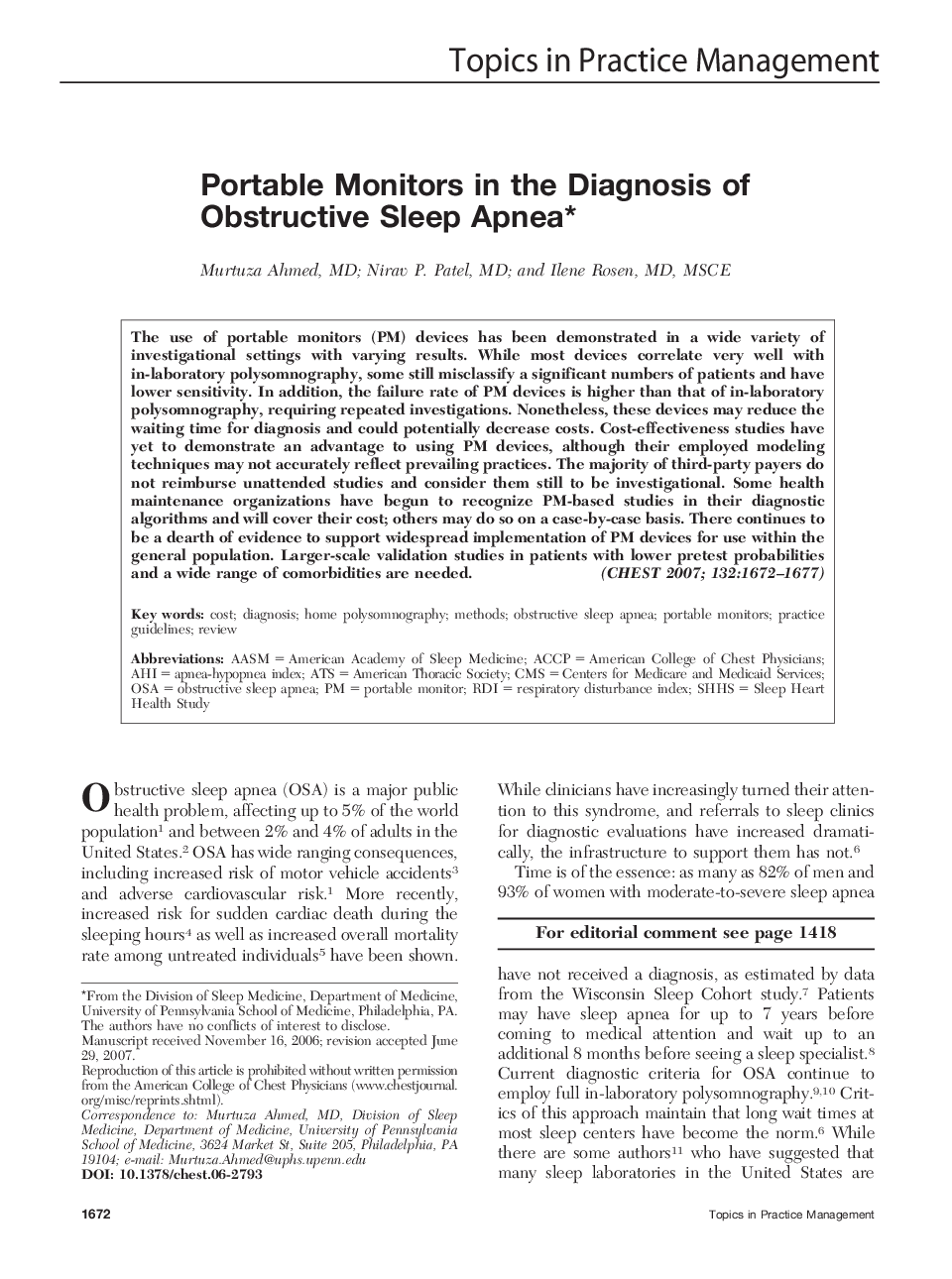| Article ID | Journal | Published Year | Pages | File Type |
|---|---|---|---|---|
| 2904449 | Chest | 2007 | 6 Pages |
The use of portable monitors (PM) devices has been demonstrated in a wide variety of investigational settings with varying results. While most devices correlate very well with in-laboratory polysomnography, some still misclassify a significant numbers of patients and have lower sensitivity. In addition, the failure rate of PM devices is higher than that of in-laboratory polysomnography, requiring repeated investigations. Nonetheless, these devices may reduce the waiting time for diagnosis and could potentially decrease costs. Cost-effectiveness studies have yet to demonstrate an advantage to using PM devices, although their employed modeling techniques may not accurately reflect prevailing practices. The majority of third-party payers do not reimburse unattended studies and consider them still to be investigational. Some health maintenance organizations have begun to recognize PM-based studies in their diagnostic algorithms and will cover their cost; others may do so on a case-by-case basis. There continues to be a dearth of evidence to support widespread implementation of PM devices for use within the general population. Larger-scale validation studies in patients with lower pretest probabilities and a wide range of comorbidities are needed.
